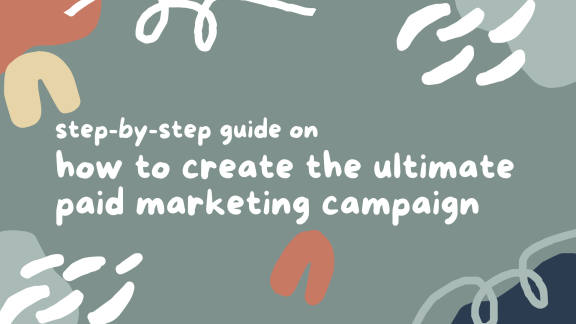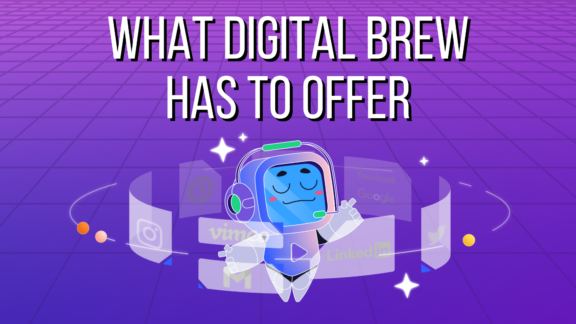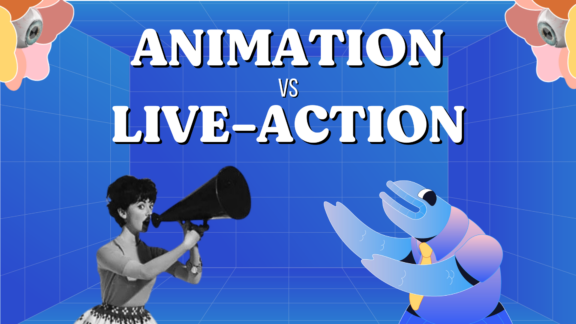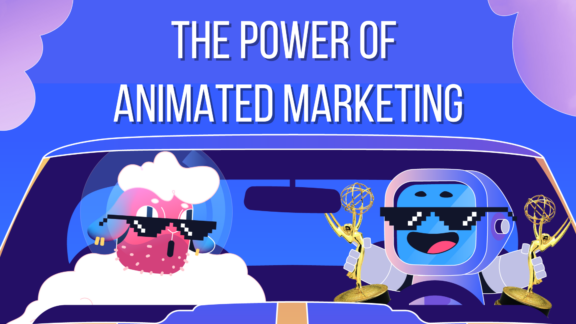- All
- 3D
- Animation
- AWS Activate
- B2B
- B2C
- Bit of Both
- Blog
- Cisco
- DB Culture
- Education
- Emmy® Award Winning
- Entertainment
- Explainer LP
- Featured
- Finance
- Fitness
- Healthcare
- HIMSS
- InBound19
- Live Action
- Live Action LP
- Manufacturing
- Marketing
- Motion Graphics LP
- Software + Tech
- The Drip
- Uncategorized
- Video Marketing
- What We Do Bit Of Both
- What We Do Live Action
Step-By-Step Guide on How to Create the Ultimate Paid Marketing Campaign
December 1, 2021

If you’re stalling on creating a paid marketing campaign, or if previous paid campaigns haven’t worked for you, this guide is for you. In it, we’ll go over, step-by-step, everything you need to do to set up the best paid marketing campaign you can. Feel free to skip around the guide to find exactly what you need, or read it from top to bottom for the complete paid campaign building experience!
What Are You Marketing?
It’s a simple question, and it may even seem like it isn’t worth asking, but it’s crucial to really nail down what it is you want to market in this paid campaign. Start by asking yourself, “What is the ultimate goal we want this campaign to accomplish?” Do you want more product purchases? Or maybe you’re just looking to increase brand awareness. Either way, the best thing to do is to keep your goal simple and focused. It’s easy to get lost in different campaign goals along the way, so set your measurable goals early and build around them.
Where Are You Marketing?
Now, it’s time to choose the platform you want to run your paid campaign on. The main platforms marketers use are:
- Facebook/Instagram
- Google Ads/YouTube
- TikTok
Each platform has its pros and cons. For example, LinkedIn typically costs more money to capture each lead, but the leads you get will be more qualified. However, picking a platform solely based on the pros and cons isn’t very tactical. The biggest qualifier should be your target audience. As of 2021, these are the average of the type of groups you can expect on each platform:
- Facebook: males, ages 25-36
- Instagram: females, ages 25-34
- Twitter: males, ages 30-49
- LinkedIn: males and females, ages 46-55
- TikTok: female, ages 18-24
- YouTube: males and females, ages 15-25
Although helpful, these demographics just scratch the surface of where to find your target audience. Another great way to discover where you may find your audience is to browse these platforms and see what kind of ads are being run on them already.
It’s also important to keep in mind the different targeting capabilities each platform has, as well as the rules that accompany them. Many social giants like Facebook have very strict rules that can disrupt your campaigns timeline if you aren’t familiar with them.
Build a Landing Page
The next step in building the perfect paid marketing campaign is making sure you have somewhere to send the leads you get from your ads. Sure, you could send them to the homepage of your site, but the problem with that is it gives the user too many options, and oftentimes, they won’t take the action you want them to. And that is exactly why we build out landing pages.
Chances are, you know what a landing page is, but in case you don’t, it’s simply a page that looks like your normal website, but doesn’t give users the options to navigate away from the page to anywhere else on your site. It should also have a very clear CTA, and a place for visitors to leave their information, like a form.
Depending on how you created your website, you may be able to use the same method to add a landing page. Website builders like Wix or Squarespace allow you to easily create landing pages that have the same theme as your site. If you have a web development team, you can ask them to create a landing page with a special URL that you drive your leads to. Or, you can use sites that specialize in building landing pages, like Leadpages.
There are lots of options when it comes to creating a landing page, but some things you will certainly want to include no matter where you build you page are:
- An explainer video (these are 80% more likely to convert leads)
- A form to collect their information that connects to your CRM
- Clients you work with/Testimonials
- A simple layout
You’ll also want to consider tracking your landing page to gain better insights about what your audience is doing when they get to the page. Each platform has their own tracking measures. Facebook has Facebook Pixel, while LinkedIn only requires you to input the URL.
Create Email Follow-Ups
No matter how great your ads and landing pages are, not every lead you get will turn into a conversion, and that’s ok! But this means you need a way to keep your product or service top-of-mind so they don’t forget why they clicked your ad in the first place. The best way to do this is by putting them on an email drip campaign.
The key here is to send enough emails to remind them that they did indeed click your ad for a reason and need your help, but also not to overload their inbox with emails they don’t want. Try only sending 3 or 4 emails to them before pulling them off the drip, and space them out to send only one a week. In your emails, make sure you have a clear CTA such as scheduling a call or checking out a specific product.
If you haven’t set up an email drip before, most CRMs, like HubSpot or SharpSpring, have the ability to create them, and they are an invaluable tool to use in your marketing!
Create Your Ads
Now it’s time to craft your creative! When it comes to the types of ads to run, you have a few choices; most every platform will have status (picture) and video ads. Some platforms also offer different kinds of ad experiences like 360 video, carousel, story ads, and more. Be sure to check the options you have available depending on where you are running your ads, and decide which type of ad is best for your campaign goals. In general though, videos drive nearly 50% more clicks than a static ad. Meaning, if you’re going to invest in a paid campaign, an animated explainer video is the way to go.
Another crucial aspect of your ads is the copy that will go along with the creative. Keep it short and simple, but do what you can to make it stand out. Short explaimations work well to catch the eye of the scroller, and break up the long sentences of text. Numbers (specifically percentages) also easily grab attention. So, something like…
Hey! Did you know 82% of people have been convinced to buy a product because of an explainer video?
Of course, put a bit more thought into your copy and keep in mind the goal you have for this campaign, but that is a good example of the type of text that can grab a reader’s attention.
And, if you aren’t sure what will work best, you can always consider A/B testing, which goes for any aspect of a paid campaign. Try two different sets of copy, or two different videos, and see what works better. After a week or so of testing, you can adapt the ads or landing pages to fit what is working better, and continue to A/B test until you have a very refined ad that you know works well. If you want to get fancy, you can use a tracking tool such as CrazyEgg to see how your web visitors act when they’re on your site. Tools like the heatmaps and recordings are especially helpful when running paid ads.
Run Your Ads
Now it’s time for all your hard work to pay off. First, you’ll need to pick a timeframe to run your ads. We recommend running them one month at a time, so you can step back and analyze ad performance in digestible chunks. As they’re running, be sure to keep a close eye on how they are performing. With certain platforms like LinkedIn, you should expect to wait around 2 weeks for the algorithm to work before you see major results. However, if before the end of the month you aren’t seeing any traction on your ads, you may want to pause them and revisit the overall campaign. This is also where your A/B testing will come in. If one ad is outperforming the other by a lot, there’s no need to wait until the end of the month to adjust those ads.
You’ll also need to keep an eye on your email follow-ups for those leads who didn’t take the desired action on your landing page. Take note of how many email opens and engagements you get. If it’s not working, there could be a simple fix, like changing the copy of the subject line, or some of the images within the email. Again, if you decide to A/B test, see which email is performing better and try to figure out why.
Your Digital Marketing Partner
By now you probably know that we at Digital Brew make awesome explainer videos (the kind you’d want to use in a paid ad campaign). But what you may not know is we offer digital marketing services as well! Things like building web pages, writing email copy, and even creating social media posts. So, if you need help launching a paid campaign, or if you want to talk video, we’re all ears! You can set up a call with us here.
Let’s Brew This!


